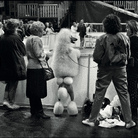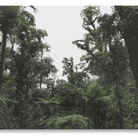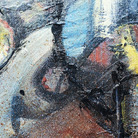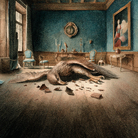Aleksander Velišček. Gullivers

Aleksander Velišček. Gullivers, A+A Centro Espositivo Sloveno - A plus A, Venezia
From 21 February 2015 to 26 February 2015
Venice
Place: A+A Centro Espositivo Sloveno - A plus A
Address: calle Malipiero 3073
Times: Tuesday to Saturday 11am-02pm / 03-06pm
Responsibles: Aurora Fonda
Telefono per informazioni: +39 041 2770466
E-Mail info: info@aplusa.it
Official site: http://www.aplusa.it
The exhibition presents a selection of recent work of the young Slovenian artist, or seven paintings that depict, in an unconventional way, different personalities including intellectuals, writers, journalists and politicians such as the journalist Anna Politkovskaya, Edward Snowden and Bradley Manning. By distinguishing characteristics of each of these faces emerge violently signs of a political struggle, the defense of a cause, of an entire life dedicated to chase an ideal. Like Gulliver of Swift, the human figure, painted by the Slovenian, appears trapped, not by ropes, but by organic structures and metal joints similar to orthopedic supports. The title of the polysemic staff Velišček evokes not only the well-known hero of the novel by Jonathan Swift, Gulliver is in fact used the word to mean "head" also by the characters of the novel A Clockwork Orange, the writer Anthony Burgess.
Gulliver is a lemma of the terminology "Nasdat" invented by the writer for his novel of 1962, and then revived in the famous film adaptation of Stanley Kubrick. The language "Nasdat" is derived from the fusion of words of English and Russian, the two idioms that represent the main political forces of that time: thus, the gratuitous violence that pervades the novel and the film is contextualized by a lexicon able to detect political causes-social, just as happens in the research and painting Velišček.
Gulliver is a lemma of the terminology "Nasdat" invented by the writer for his novel of 1962, and then revived in the famous film adaptation of Stanley Kubrick. The language "Nasdat" is derived from the fusion of words of English and Russian, the two idioms that represent the main political forces of that time: thus, the gratuitous violence that pervades the novel and the film is contextualized by a lexicon able to detect political causes-social, just as happens in the research and painting Velišček.
SCARICA IL COMUNICATO IN PDF
COMMENTI

-
 Dal 4 July 2025 al 21 September 2025
Roma | Palazzo Bonaparte
Dal 4 July 2025 al 21 September 2025
Roma | Palazzo Bonaparte
-
 Dal 28 June 2025 al 21 September 2025
Roma | Palazzo Bonaparte
Dal 28 June 2025 al 21 September 2025
Roma | Palazzo Bonaparte
-
 Dal 24 June 2025 al 29 October 2025
Firenze | Museo Novecento
Dal 24 June 2025 al 29 October 2025
Firenze | Museo Novecento
-
 Dal 26 June 2025 al 18 July 2025
Firenze | Palazzo Sacrati Strozzi
Dal 26 June 2025 al 18 July 2025
Firenze | Palazzo Sacrati Strozzi
-
 Dal 26 June 2025 al 28 September 2025
Roma | Vittoriano - Sala Zanardelli
Dal 26 June 2025 al 28 September 2025
Roma | Vittoriano - Sala Zanardelli
-
 Dal 25 June 2025 al 26 October 2025
Bergamo | GAMeC
Dal 25 June 2025 al 26 October 2025
Bergamo | GAMeC


